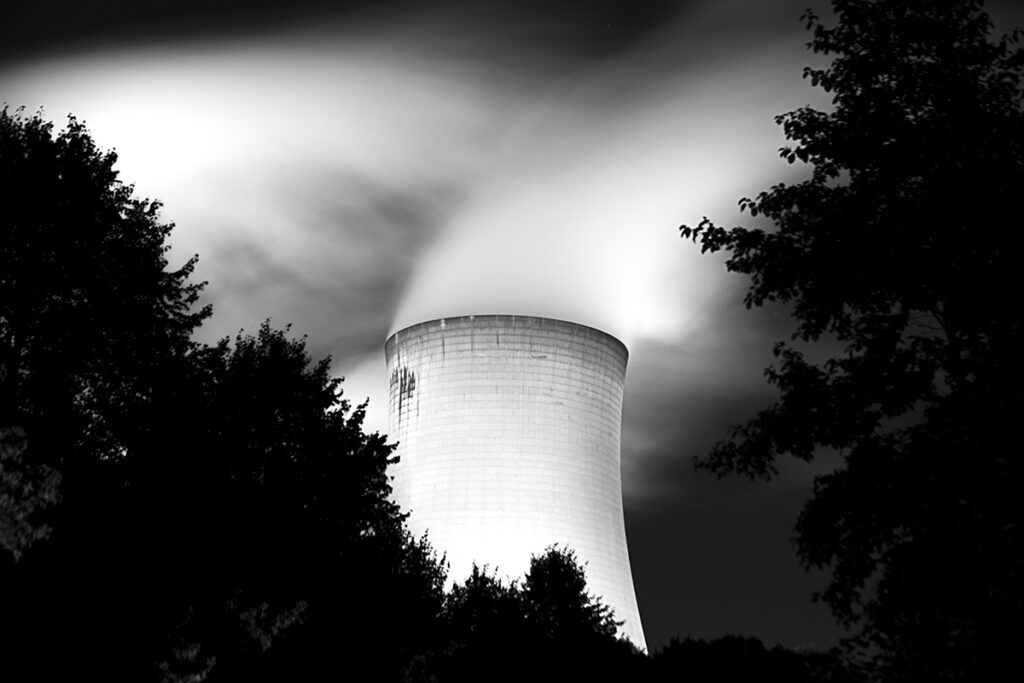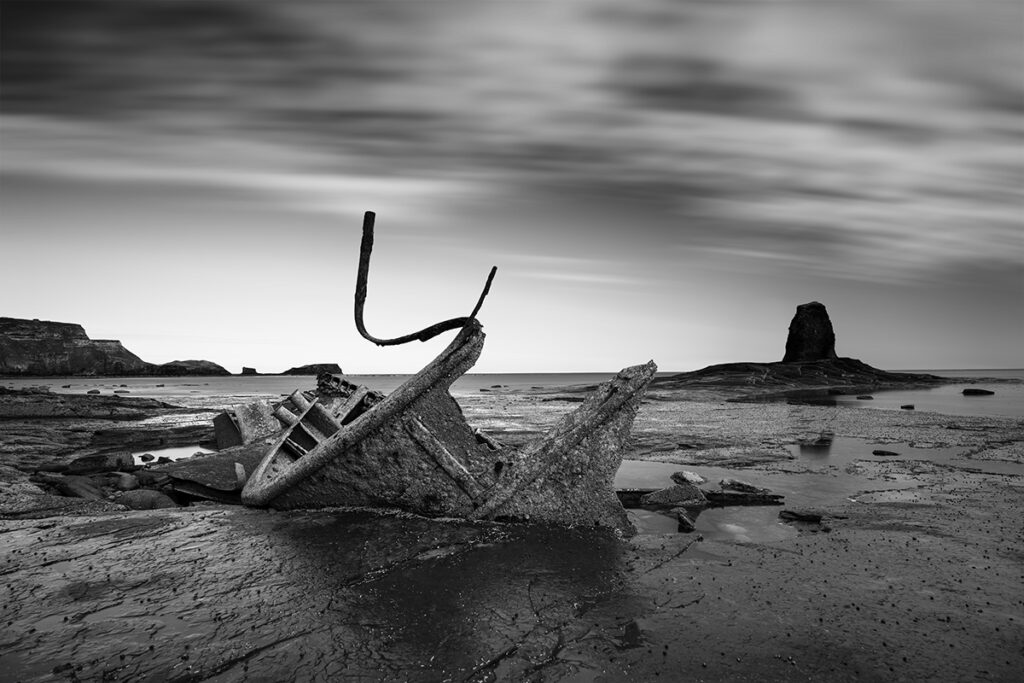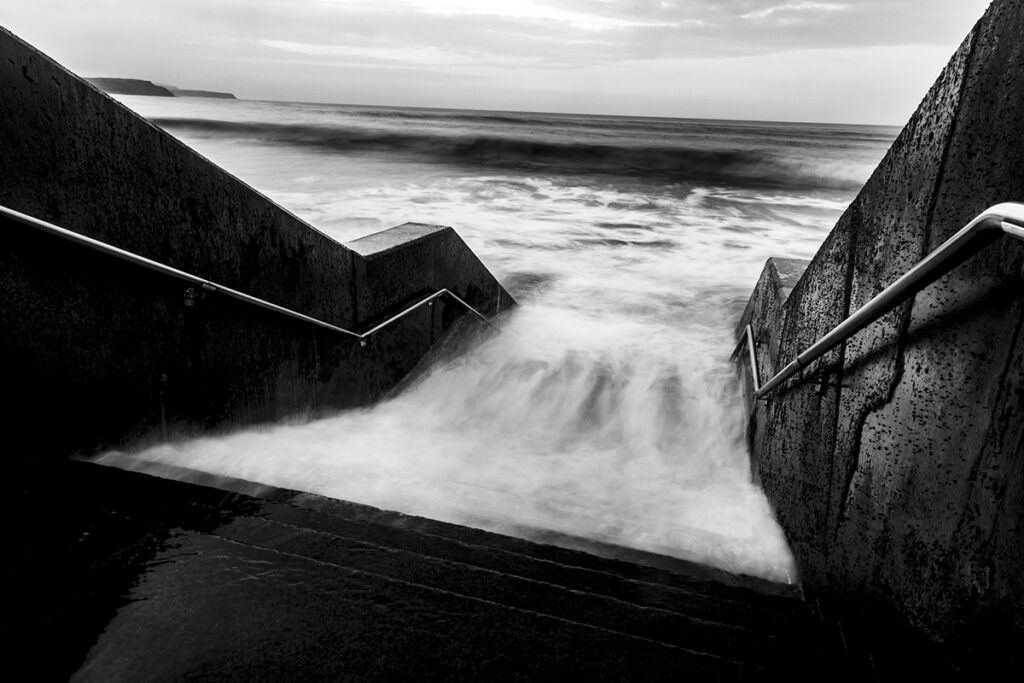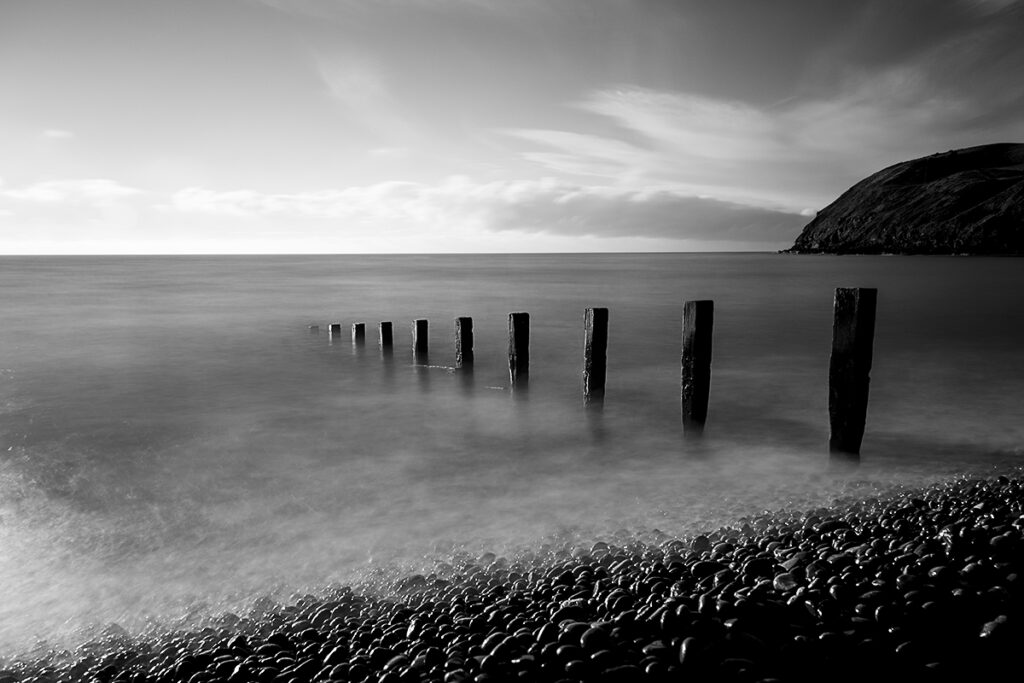
Capturing Time and Emotion: The Art of Long Exposure Photography
Time-bending imagery has been my passion for years—the transformative approach that reveals hidden dimensions of our world through extended shutter speeds. By keeping the camera’s eye open far longer than human vision allows, I create images that exist in a realm between reality and dreams. This photographic technique isn’t just a method for me—it’s a profound way to connect with landscapes and express their emotional essence.
Long exposure photography isn’t simply about documenting how a place looks, but how it feels when experienced fully and deeply. It’s about transcending the limitations of a single moment and compressing time into a single frame, revealing the emotional truth of coastal scenes, urban environments, and mountain landscapes that would otherwise remain invisible.
The Transformative Power of Extended Exposures
Long exposure photography works through the manipulation of time itself. By keeping the shutter open for extended periods—from seconds to minutes or even hours—the camera records the passage of time in ways our eyes never could:
- Turbulent ocean waves transform into ethereal fog
- Bustling city streets become rivers of light
- Drifting clouds paint dramatic streaks across mountain skies
This convergence of time and light reveals a world that exists beyond our normal perception, offering a glimpse into the fourth dimension through still imagery. When we observe a scene with our eyes, we witness a sequence of moments in rapid succession, but the camera’s ability to collect light over extended periods creates something entirely new—a visual amalgamation that exists only through photographic alchemy.
The resulting images often evoke a sense of tranquility and reflection that contradicts the actual conditions during capture. A seascape photographed during violent surf conditions may appear serene and meditative through a 3-minute exposure. A crowded city intersection becomes an elegant study in light and motion when captured over 30 seconds. This dichotomy between reality and representation creates images that speak to our deeper emotional understanding of these environments.
The Technical Foundations of Time-Stretched Photography
While artistic vision drives my approach to long exposure photography, technical expertise serves as the foundation. Understanding the relationship between aperture, ISO, and shutter speed becomes even more critical when working with extended exposures. These fundamental elements of photography combine with specialized equipment to make these time-bending images possible:

- Neutral Density Filters: These specialized filters reduce the amount of light entering the lens without affecting color, allowing for extremely long exposures even in bright conditions. My kit includes everything from subtle 3-stop filters to dramatic 15-stop filters that can turn midday into midnight.
- Stable Tripods: Any movement during long exposures creates unwanted blur. A rock-solid tripod is essential, particularly when working in coastal environments where wind and water create challenging conditions.
- Remote Triggers and Delayed Timers: To eliminate camera shake when beginning the exposure, remote triggers are valuable tools in the long exposure photographer’s arsenal. Alternatively, using the camera’s built-in 2-second timer mode achieves the same goal without additional equipment, allowing the vibrations from pressing the shutter button to settle before the exposure begins.
- Proper Technique: Long exposure photography demands meticulous attention to details like securing the camera strap (to prevent wind-induced movement), using mirror lockup on DSLRs, and calculating extended exposures based on changing light conditions.
- Premium Optics: The quality of glass you place in front of your sensor dramatically impacts the final image. My go-to lens for long exposure work is the Canon EF 24mm f/1.4L USM prime lens. This professional-grade L-series lens offers exceptional sharpness, contrast, and color rendition that withstands the extended exposure times. The 24mm focal length provides an ideal balance for landscape work—wide enough to capture expansive scenes without the extreme distortion of ultra-wide angles. The fast f/1.4 maximum aperture, while rarely used at such a wide opening for long exposures, provides brilliant clarity when stopped down to the f/8-f/11 sweet spot where long exposure work typically happens. The lens’s weather sealing also proves invaluable when working in coastal environments or challenging weather conditions.
Beyond equipment, successful long exposure photography requires mathematical precision. Exposure calculations become increasingly complex as filter strength increases. When using a 10-stop filter, for example, an unfiltered exposure of 1/30th second translates to a 30-second exposure with the filter attached. This technical foundation, while essential, ultimately serves the creative vision.
Tools of Temporal Transformation
My filter collection has become as essential to my long exposure photography as a painter’s brushes are to their art. At the core of my kit is the Lee Filters Lee100 Deluxe Kit Plus, a comprehensive system designed for professional landscape photography. This modular filter holder accommodates 100mm square filters and provides unmatched versatility for working in challenging conditions.
The Lee100 system features a holder that attaches securely to adapter rings of various sizes, allowing me to use the same filters across different lenses. The system’s ingenious design includes a polarizer ring that allows simultaneous use of both polarizing and neutral density filters—crucial for removing glare from water surfaces while extending exposure time. The Deluxe Kit’s construction provides exceptional durability in harsh field conditions, from salt spray at coastal locations to dust and wind in mountain environments.
The heart of my long exposure work relies on Lee’s legendary Stopper filters. The Little Stopper (6-stop ND) allows me to extend exposures just enough to blur moving water and clouds while maintaining some texture. This filter excels during golden hour and blue hour when light levels are already reduced. The Super Stopper (15-stop ND) is my tool for extreme transformations, capable of turning a 1/125th second exposure into a surreal 4-minute scene that reveals dimensions of reality invisible to the naked eye.
These tools aren’t merely technical accessories—they’re the keys that unlock invisible worlds and emotional landscapes. My Lee graduated filters help me balance dramatic skies with foreground elements in a way that mirrors how my heart experiences these scenes rather than the camera’s limitations.
This approach to photography requires a relationship with your tools that goes beyond technical understanding. When I slide my 15-stop Super Stopper into place on a brilliant day at the coast, I’m not just reducing light—I’m preparing to transform reality into something dreamlike and meditative that speaks to deeper emotional truths.
The filters themselves become extensions of creative vision rather than mere technical necessities. Each density of filter creates a different relationship with time—a 6-stop might compress seconds into a single frame, while a 10-stop might compress minutes, and a 15-stop can capture hours of light and movement. Learning which tool serves which emotional purpose has been a journey of discovery.
The Intimate Dance with Time and Light
Long exposure photography has fundamentally changed my relationship with landscapes. I no longer simply visit locations to take pictures—I commune with them through extended periods of quiet observation and creative intention. Those moments of waiting and watching have become sacred practices of connection.
Some of my most powerful images emerged during conditions that sent other photographers packing—when storm clouds gathered over coastal cliffs, when fierce winds swept across mountain ridges, when challenging light transformed city skylines. These moments of meteorological drama create opportunities for images that capture not just visual beauty but emotional resonance.
I still remember standing beneath a threatening sky for a full four minutes as my camera absorbed the scene, feeling the first raindrops begin to fall just as the exposure completed. That final image captured not just visual elements but the very tension I felt—the calm water contrasting with the energy of the approaching storm.
This approach to photography demands presence and patience unlike any other technique. While standard photography might involve capturing a decisive moment in 1/250th of a second, long exposure work invites us to inhabit time differently—to experience each location through extended meditation, sometimes lasting hours for a single composition. This slower approach fosters a different kind of seeing, where subtle details emerge and relationships between elements become more apparent.
The Soul of Coastal Landscapes
In coastal settings, long exposure photography helps me capture moments of dramatic contrast—when churning seas meet imposing cliffs beneath brooding skies. Through extended exposures, violently crashing waves transform into ghostly mist while storm clouds appear suspended in time.
This technique reveals a paradoxical beauty at the coast impossible to witness with the naked eye. A three-minute exposure transforms dangerous, chaotic waters into serene surfaces that appear almost solid. The moody skies that threatened downpours become painterly brushstrokes above water as smooth as silk. These coastal images speak to the dual nature of existence—the transformation of turmoil into tranquility captured through patient observation and artistic vision.
Coastal long exposures often require careful timing with tidal cycles. The movement of water around static elements like rocks and piers creates compelling visual tension. I often scout locations during regular tide cycles, noting which formations create the most interesting interactions with water at different levels. This preparation allows me to return when conditions align with my creative vision—when the tide, light, and weather converge to create optimal circumstances for emotional impact.
What draws me repeatedly to coastal long exposure work is the unpredictable nature of each image. Despite careful planning, the exact patterns formed by water movement remain a collaborative process between photographer and natural forces. This element of surprise—of co-creation with nature—keeps the process endlessly fascinating and rewarding.

Revealing the Hidden Symphony of Cities
Extended exposures in urban environments show me the secret choreography of city life—the elegant patterns created by thousands of individual movements compressed into a single frame. Headlights and taillights become flowing rivers of light through concrete canyons, revealing the city’s invisible circulatory system.
This photographic technique unveils the emotional truth beneath the surface of our built world. As daylight fades to blue hour, time-stretched images transform harsh architectural elements into softer, more organic forms as they interact with human movement and artificial light. These images aren’t just pretty pictures but emotional meditations on humanity’s relationship with the environments we’ve created.
Urban long exposure photography creates a fascinating dialogue between the static and the fluid. Fixed architectural elements provide anchoring structure while human movement—captured as light trails—reveals the organic flow of life within these constructed environments. This visual conversation between permanence and transience, structure and movement, speaks to deeper truths about urban existence.
The technical challenges of urban long exposure work differ significantly from natural landscapes. Light pollution creates exposure calculation challenges, while the vibrations from traffic and subway systems can introduce subtle blur even with the most stable tripods. Yet these technical obstacles ultimately serve the creative process, demanding innovation and adaptation that leads to unexpected creative breakthroughs.
The Ancient Drama of Mountains
Mountain landscapes have always evoked feelings of awe and humility, but long exposure techniques allow me to express those emotions visually. When storm clouds race across jagged peaks and light dances across ancient stone faces, these time-dilated images reveal the drama unfolding across different timescales.
What moves me most about mountain photography with extended exposures is capturing the relationship between permanence and transience. Mountains that have stood for millions of years appear alongside clouds transforming by the second—all preserved in a single frame. There’s something profoundly moving about witnessing rushing mountain streams become silken threads while sharp peaks remain steadfast—the perfect expression of nature’s contrasting rhythms captured through the magic of extended time.
Mountain environments present unique challenges for long exposure work. Rapidly changing weather conditions can transform a scene completely during a single exposure. Temperature variations between day and night create atmospheric effects that interact unpredictably with extended shutter speeds. These challenges become part of the creative process, introducing elements of chance and discovery that enrich the resulting images.
The higher elevations often provide extraordinary light quality for long exposure work. The thinner atmosphere at elevation allows for cleaner light transmission, while dramatic cloud formations create natural graduated filters across mountain scenes. When combined with extended exposures, these conditions can produce images of otherworldly quality that express the spiritual dimension many experience in mountain environments.

Evolving Artistry Through Experience
As my journey with time-bending photography has deepened, I’ve developed distinctive approaches to capturing the emotional essence of landscapes:
- Embracing challenging weather conditions rather than avoiding them
- Seeking out visual tension between static and dynamic elements
- Using exposure time as an expressive tool rather than merely a technical setting
- Looking beyond the obvious composition to find emotional resonance
Each session with the camera becomes an opportunity to see familiar places with fresh eyes. This technique continues to reveal new dimensions of our world with every click of the shutter.
The evolution of my long exposure work has followed an interesting trajectory—beginning with technically competent but emotionally shallow images, progressing to more nuanced work as my understanding of each environment deepened. The most significant shift occurred when I stopped seeking merely beautiful images and began pursuing emotionally authentic ones—photographs that expressed my subjective experience of each location rather than idealized versions.
This artistic growth parallels my philosophical journey with photography. Initially focused on mastering technical challenges, I gradually recognized that technical expertise only creates the conditions for artistic expression—it doesn’t guarantee it. The most compelling images emerge when technical mastery becomes invisible, allowing emotional truth to take center stage.
The Enduring Allure of Time-Stretched Images
What continues to fascinate me about long exposure photography is its unique ability to compress time into a single, evocative image. When I review a successful photograph created with extended exposure, I’m experiencing the world through an expanded consciousness—seeing beyond the limitations of a single moment to witness the flow of time itself.
This artistic approach allows me to create images that speak to deeper truths about our relationship with landscapes. Long exposure photography transcends simple documentation to become a form of visual poetry—where coastal drama, urban energy, and mountain majesty are transformed into emotional expressions that resonate with viewers on a profound level.
Each image created through extended exposure represents not just what I saw, but what I felt in the presence of these landscapes—the invisible made visible through the magical alchemy of time, light, and artistic vision. This transformative quality continues to draw me back to long exposure techniques, even as other photographic trends come and go.
Perhaps the deepest appeal of long exposure photography lies in its paradoxical nature—it uses highly technical means to create deeply emotional results; it employs precision to capture ambiguity; it uses modern technology to connect us with timeless natural rhythms. These beautiful contradictions make the technique endlessly fascinating and rewarding.
As technology continues to evolve, the fundamental appeal of long exposure photography remains unchanged—it allows us to see beyond the limitations of our human perception, revealing hidden dimensions of our world that speak to our deeper emotional understanding of time and place. In a world increasingly dominated by fragmented attention and instantaneous imagery, these time-stretched photographs invite contemplation and wonder—reminding us of the profound beauty revealed when we slow down and truly observe the world around us.
